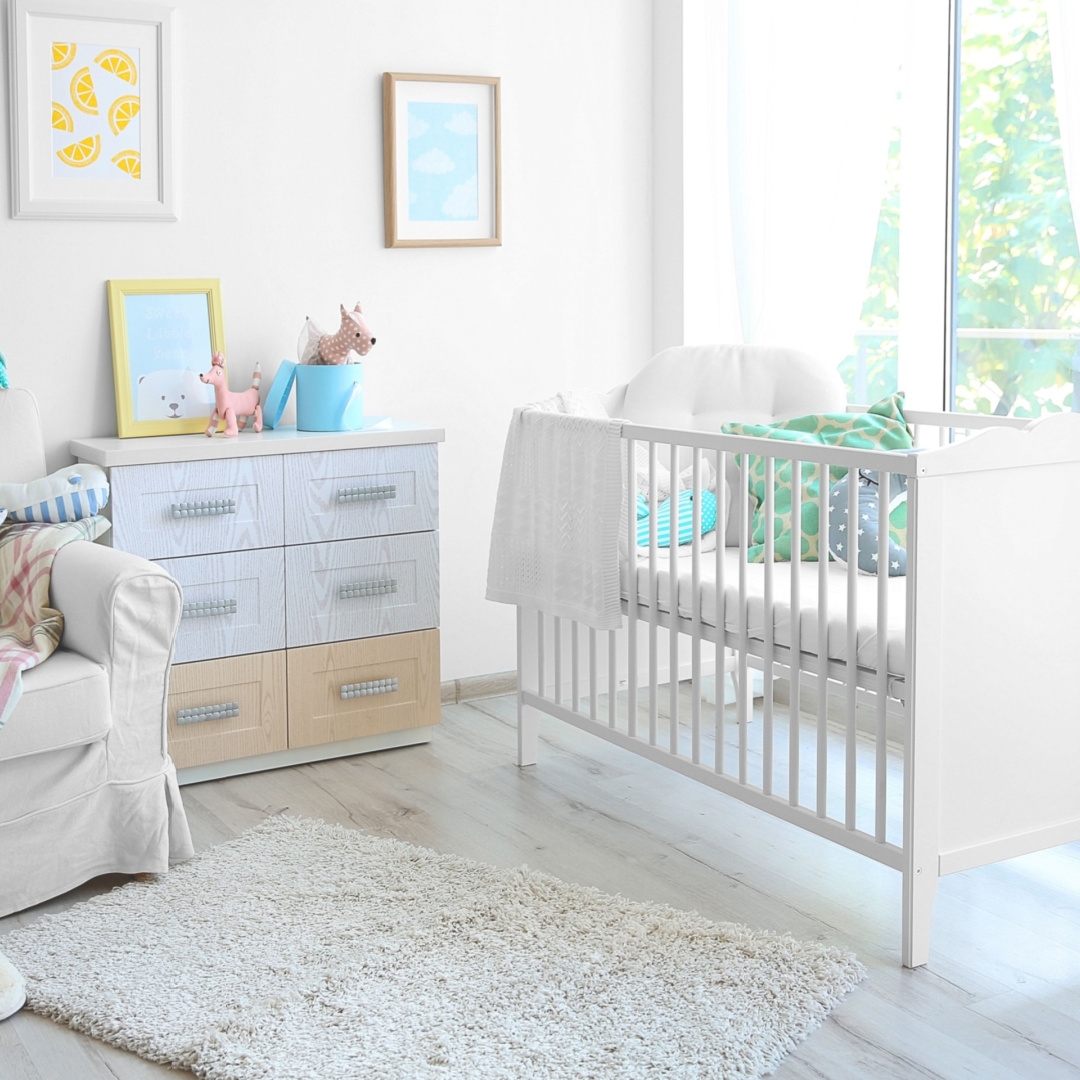Summer is coming and it’s time to think about ways to keep your baby’s nursery cool. And although air-conditioning makes life more comfortable, there are times when it’s not available, even an option, or you may just want to turn it off.

Oh baby, you look so hot!
Babies, like adults, are prone to heat-related stress when the weather is hot. This is especially true for other vulnerable groups including pregnant women, the elderly and people who have chronic health conditions. Because babies don’t have well developed heat regulating processes in their body and they can’t verbalise how they’re feeling, parents need to be mindful of keeping their baby cool and comfortable. This means making sure they’re hydrated, not overdressed, kept out of the sun and monitored when the temperature climbs.
It’s important to think about where your baby spends most of their time in the house. During their wakeful times this is likely to be in the living areas and kitchen – wherever you may be; however, where they sleep also needs to be considered. Babies (hopefully!) spend a lot of time sleeping but can wake if they feel hot and uncomfortable.
What’s the best way to tell if my baby is overheating?
Feel your baby’s skin on their tummy and back. Their skin should feel warm and not too hot or cold. How they’re behaving is another good way of checking how they’re feeling.
Babies who are hot and at risk of overheating look flushed, red and uncomfortable. Their skin may feel warm to the touch and they will often be sweating (clammy) and have damp hair. If a baby continues to overheat their heartbeat can become rapid and they become lethargic and sleepy.
The best way to tell if your baby is overheating is to take their temperature. An average temperature is between 36.5-37.0 degrees Celsius. Babies who are unwell with an infection can also have an elevated temperature and may or may not have other symptoms.
5 top cooling tips for your baby’s nursery
- Check the direction your house faces (orientation) and work out which are the coolest rooms. The setting western sun can raise the temperature of a room so it’s significantly higher than in the earlier parts of the day. Plan for your baby’s nursery to be one of the cooler rooms.
- Use air-conditioning and/or fans to cool your baby’s room. Otherwise, open the windows to increase air flow and allow breezes to come in.
- Use blinds, curtains and awnings to block out the sun from warming the room.
- Check if your house is insulated, especially the roof space. This can reduce the temperature by several degrees.
- Move your baby’s cot around or have a couple of cots set up so your baby can sleep where it’s coolest.
Other hot weather tips
Use your own judgement about what’s right for you and your little one. As a general guide, if you’re feeling hot and uncomfortable, they’re likely to be feeling much the same way. Dress them as you’d dress yourself – comfortably warm. What’s important is that they’re dressed appropriately for room temperature.
- Dress your baby in lightweight, natural fibres such as cotton/bamboo/linen blends. Fabric labels are generally sewn into the back of the neck or the inner left side seam.
- Choose clothing for your baby which is loose-fitting and allows air flow between the fabric and their skin. If you go outside and they’re exposed to sunlight, it’s important to dress them in clothing with a tighter weave, and ideally an SPF factor to protect their skin from the UV sunrays. A sun protection factor (SPF) of 30 offers ‘good’ protection; an SPF of 50 and 50+ offers excellent protection.
- Stay in the shade where possible. Pick the times of day when you venture outside – before 10 am and not before 4 pm if possible.
- Keep your baby well hydrated. Offer extra breastfeeds and follow your baby’s cues if they seem thirsty. If they’re formula feeding, offer extra drinks of cooled, boiled water in-between their milk feeds.
- Bath your baby in a tepid bath. Damp cloths wiped over their skin will also help to keep them cool and comfortable.
Other cooling ideas
Wet some sheets or towels in cold water and position in front of fans. You can also fill bowls with ice cubes and position them so the air flows over the ice.
Try to avoid a cluttered environment. The more open space you have in your home, the easier it is to move around and to support good ventilation.
Get out of the house if it’s too hot. Downstairs areas, sitting in the shade of a tree, going for a drive in an air-conditioned car of even a visit to the local (air-conditioned) library or shopping centre is a good option.
Be aware of the safety precautions if you use a pram cover. These can reduce air circulation, even if they’re made from a breathable material.
For more information about keeping your baby cool:
Speak with your Child Health Nurse or GP. Also check red nose guidelines about baby’s temperature and sleep.
Please consult your doctor in the event of any emergency.
Written for Sudocrem by Jane Barry, Midwife and Child Health Nurse, September 2023.
Copyright © 2024 Teva Pharma Australia Pty Ltd

